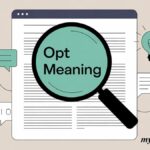“13 Powerful Alternatives to ‘Learn from Your Mistakes'” refers to the concept of finding different, more dynamic ways to approach failures, missteps, and errors in our journey toward personal growth. Rather than simply accepting mistakes as failures, these alternatives emphasize using setbacks as tools for self-improvement, reflection, and evolution. By re-framing how we view our mistakes, we unlock opportunities for deeper learning and growth, propelling us toward greater success.
Failure doesn’t have to be a dead end. It can be your most powerful teacher, but only if you know how to turn it into a stepping stone. The truth is, when we reframe our mistakes with fresh perspectives, we unlock the potential to grow in ways we never imagined.
These 13 powerful alternatives go beyond the typical advice of “learn from your mistakes” by offering new ways to channel failures into fuel for personal transformation. Whether you’re trying to improve professionally or personally, understanding how to pivot, reflect, and evolve from errors is key to unlocking your true potential.
1. Embrace the Lessons Hidden in Failure

Failure can be disheartening, but it’s also a goldmine of lessons waiting to be unearthed. Instead of focusing solely on the disappointment that often comes with failure, shift your focus to the lessons from your failures. Each setback teaches us something new—whether it’s about our approach, our mindset, or our perseverance.
Why it works: Viewing failure as a source of learning helps you extract meaningful insights, allowing you to adapt and improve for the next challenge. This shift in perspective is a cornerstone of the growth mindset.
Example: Imagine a failed business pitch. Rather than seeing it as a loss, consider it an opportunity to learn more about your audience, your message, and your delivery. This kind of reflection can make your next presentation stronger and more effective.
2. Turn Setbacks Into Stepping Stones
The idea of stepping stones is rooted in progress. Every failure is just another stepping stone on the path to success. Each misstep provides a chance to build a more solid foundation for the next attempt.
Why it works: Recognizing that setbacks are simply part of the journey allows you to stay motivated and focused on the long-term goal. By accepting that mistakes are necessary learning opportunities, you can overcome them without getting discouraged.
Example: When you fail a test, it isn’t the end of the road. Instead, you can use it as a stepping stone to evaluate your study habits and tweak your strategy for next time, ultimately improving your performance.
3. Harness the Power of Your Errors for Growth
What if you could harness your mistakes to propel you forward? Instead of running from errors, embrace them as powerful tools for growth. Each mistake is a chance to educate yourself through your faults, making them valuable learning experiences.
Why it works: Embracing mistakes rather than fearing them allows you to build resilience. Over time, you’ll develop the mental fortitude needed to handle more complex challenges.
Example: Think about a time when you made a mistake at work. Perhaps it was a missed deadline or a wrong decision. Rather than letting it drag you down, use the error as a teaching moment. Maybe it taught you to manage your time better or to ask for feedback sooner.
4. Transform Your Blunders Into Teachable Moments
Teachable moments are often the most powerful learning experiences. When you make a mistake, don’t just let it slip away without gaining something valuable from it. Transform your blunders into opportunities to teach yourself and others what went wrong and how to improve.
Why it works: By reflecting on your wrongdoings and sharing those lessons with others, you deepen your own understanding while helping others grow as well.
Example: After a failed project, you might sit down with your team to discuss what went wrong. In this conversation, everyone gains insight into the flaws in the process and develops strategies to avoid similar mistakes in the future.
5. Extract Valuable Insights from Your Slip-ups
Rather than seeing slip-ups as setbacks, view them as chances to extract insights. Mistakes often highlight areas where you need to improve, whether it’s your strategy, time management, or communication skills.
Why it works: This method encourages self-reflection and self-awareness, both of which are key for continuous personal development.
Example: If a marketing campaign didn’t go as planned, you might analyze the data to uncover what aspects failed. Did the messaging not resonate with the audience? Did the timing miss the mark? Understanding these nuances will make your next campaign stronger.
6. Grow Stronger by Reflecting on Your Missteps
Reflection is one of the most powerful tools in the journey of personal development. When you reflect on your mistakes, you gain clarity on what went wrong and what needs to change. Self-reflection is key for growth and can help you make more informed decisions moving forward.
Why it works: Reflecting on your mistakes fosters self-awareness, a critical component of emotional intelligence. When you understand why something went wrong, you can take proactive steps to avoid repeating the same errors.
Example: After a failed team project, spend some time reflecting on what could have been done differently. Were there communication issues? Did you lack clear goals? This reflection will not only help you avoid making the same mistake but also equip you with strategies to handle future projects more effectively.
7. Use Your Failures as Fuel for Self-Improvement

Rather than allowing failure to demoralize you, use it as fuel for self-improvement. Every mistake contains the potential for growth. When you see failure as a tool for refining your skills, you’ll stay motivated to keep trying, even when things don’t go as planned.
Why it works: Resilience and a growth mindset go hand in hand. When you approach mistakes as opportunities to improve, you’re more likely to persist, which is critical for long-term success.
Example: If you’re learning a new language and make several errors in grammar, use those mistakes to dig deeper into the rules. Instead of getting frustrated, channel your energy into practicing more, turning each mistake into a building block toward fluency.
8. Cultivate Wisdom from Your Mistakes
Each mistake you make adds to your wisdom. Over time, you accumulate knowledge about what works and what doesn’t, which allows you to make better decisions in the future.
Why it works: Embracing mistakes as opportunities for growth catalysts helps you evolve. As you gain more wisdom, you’ll become better equipped to handle future challenges with confidence.
Example: Consider a professional who has been in the industry for years. They’ve made plenty of mistakes along the way, but those mistakes have helped them develop a deep understanding of their field. Their ability to navigate complex situations stems from the lessons they’ve learned from their errors.
9. Convert Failures into Opportunities for Mastery
Every failure is a chance to get closer to mastery. Instead of seeing mistakes as roadblocks, use them to hone your skills and develop mastery. With each failure, you get closer to understanding the nuances of your craft.
Why it works: Mastery doesn’t come without failure. The more you fail and learn from those failures, the more skilled and proficient you become in your field.
Example: A musician might hit wrong notes repeatedly during practice, but with every mistake, they refine their technique, eventually achieving mastery of their instrument. Each failure becomes a stepping stone toward greater proficiency.
10. Learn to Pivot After a Misstep

Sometimes, a mistake isn’t just about fixing what went wrong but about changing direction entirely. Learning to pivot after a misstep is an essential skill, especially in fast-paced industries where adaptation is crucial.
Why it works: Adaptation is key in the ever-changing landscape of life and work. Being able to adjust after a misstep ensures that you’re always moving forward, even when things don’t go according to plan.
Example: A startup might have a product that’s not gaining traction in the market. Rather than sticking to the same approach, they decide to pivot—maybe they refine the product or change their target audience. This flexibility often leads to greater success in the long run.
11. Turn Mistakes into Milestones of Progress
Rather than seeing mistakes as failures, treat them as milestones of progress. Each misstep is a step forward in your journey of personal growth and development. By adopting this mindset, you turn every failure into an opportunity for improvement.
Why it works: Reframing mistakes as milestones allows you to celebrate your growth, no matter how small the progress may seem. Each mistake gets you closer to your goals.
Example: After a failed business launch, look back and acknowledge what you’ve learned: market research, customer feedback, and operational lessons. These are milestones that will guide your next venture.
12. Reframe Errors as Learning Experiences
One of the most effective ways to handle mistakes is to reframe them as learning experiences. When you see errors not as setbacks but as moments of growth, you make it easier to learn from them and move forward.
Why it works: Self-awareness and adaptation are key to growth. By consciously reframing mistakes, you open yourself up to continuous improvement.
Example: A manager who makes a poor hiring decision can view it as a valuable learning experience. They gain insights into how to refine their hiring process and avoid similar mistakes in the future.
13. Embrace Your Failures as Opportunities for Evolution
Ultimately, mistakes are opportunities for evolution. They help you grow, adapt, and improve. By embracing failures as part of the process, you empower yourself to continuously evolve into a better version of yourself.
Why it works: Growth catalysts like failure allow you to evolve, helping you become more resilient, adaptable, and knowledgeable with each mistake.
Example: Every mistake, whether big or small, shapes you into a more capable and well-rounded individual. Over time, you’ll look back at your past failures not with regret but with appreciation for how far they’ve brought you.
Conclusion
In conclusion, the 13 Powerful Alternatives to “Learn from Your Mistakes” offer a refreshing approach to failure. Instead of feeling discouraged by mistakes, these alternatives encourage us to see them as chances for growth. By applying these methods, we can turn every setback into a learning opportunity and improve ourselves.
The 13 Powerful Alternatives to “Learn from Your Mistakes” not only help us understand our errors but also guide us on how to move forward. Each mistake becomes a valuable step toward personal development. When you embrace these alternatives, you’re choosing to grow stronger and wiser, Powerful Alternatives to “Learn from Your Mistakes making every failure a tool for success.

Sophie Bell is a creative writer at Mystic Saviour, specializing in Word Mechanics, Name Narratives, and Linguistic Twists. She brings a passion for language and storytelling, helping readers explore unique and engaging ways to enhance their writing.










